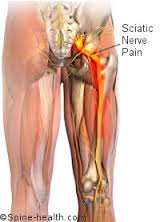 The word “SCIATICA” refers to symptoms of leg pain, tingling, weakness, or numbness that typically starts in the lower back and continues downward through the buttock and into the lower extremity.
The word “SCIATICA” refers to symptoms of leg pain, tingling, weakness, or numbness that typically starts in the lower back and continues downward through the buttock and into the lower extremity.
f
The term itself is NOT a medical diagnosis, but rather a symptom of a medical problem that results in the irritation of this nerve. Sciatica can be caused by compression of the lumbar nerve roots, spinal stenosis, disc herniation, or entrapment of the sciatic nerve ANYWHERE along its path between the lumbar spine and the lower extremity.
f
f
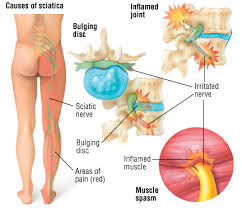
Most cases of sciatica do not require surgery. However, there are red flags in which surgery may be needed and in some cases, where emergency care is indicated. Red flag symptoms include severe muscular atrophy and wasting, a recent onset of bladder and bowel incontinence, “saddle anasthesia” where there is a loss of sensation in the area of the buttocks and the perineum, or sciatica created from a recent fall which may indicate fracture.
f
Severe compression of the sciatic nerve from a structure, such as seen in with “stenosis” (narrowing of the spinal canals), may also necessitate surgical intervention. In such a case, the structure causing the issue is surgically altered to remove pressure.
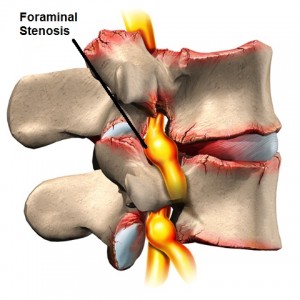
f
HOWEVER, mild to moderate cases of stenosis that causes sciatica often respond well to soft-tissue therapies, exercise, chiropractic adjustments, flexion-distraction procedures, and activity management.
f
Although these procedures do not remove the stenosis, they help remove a lot of the mechanical stress that is responsible for many of the symptoms the patient experiences. Every case is assessed on an individual basis to determine the best outcomes.
f
VERY COMMONLY, irritation to the sciatic nerve can be caused by soft-tissue obstructions OR can be caused by active TRIGGER POINTS that cause referral pain patterns down the lower extremity that MIMICK those of a true sciatica. In this case, hands-on therapies as performed in our office can be utilized to free up these restrictions.
f
One example of this is seen with a Piriformis Syndrome. This muscle is found in the 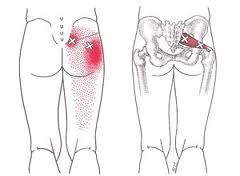 lower gluteal area and often becomes tight on many individuals. Upon doing so, it compresses the sciatic nerve which runs right underneath it. Soft tissue procedures and specific corrective exercise to loosen this muscle often fully corrects the problem.
lower gluteal area and often becomes tight on many individuals. Upon doing so, it compresses the sciatic nerve which runs right underneath it. Soft tissue procedures and specific corrective exercise to loosen this muscle often fully corrects the problem.
f
There are SEVERAL other soft-tissue impingement sites along the course of the sciatic nerve that can occur. Releasing all these entrapment sites in addition to strengthening and rehabilitating certain key structures has proven to be incredibly successful for many patients.
f
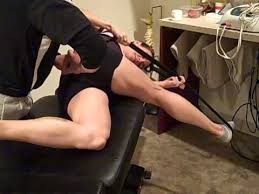
When a patient suffers from sciatica, a comprehensive evaluation and appropriate diagnostic imaging studies are needed to properly diagnose the cause.
f
If this describes you and you’d like us to evaluate your condition, give us a call today.
f
g
Rick Duenas, DC, CES, NASM-CPT
Spine-Certified Active Release Practitioner (ART)
f
f





FOLLOW US!